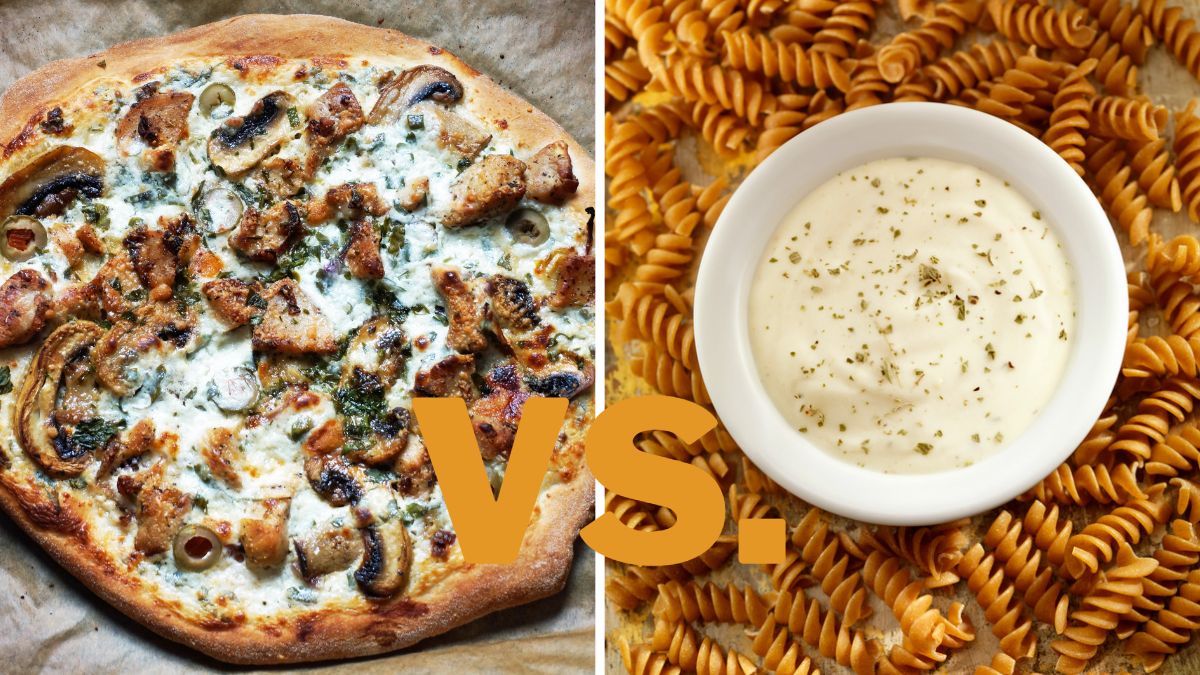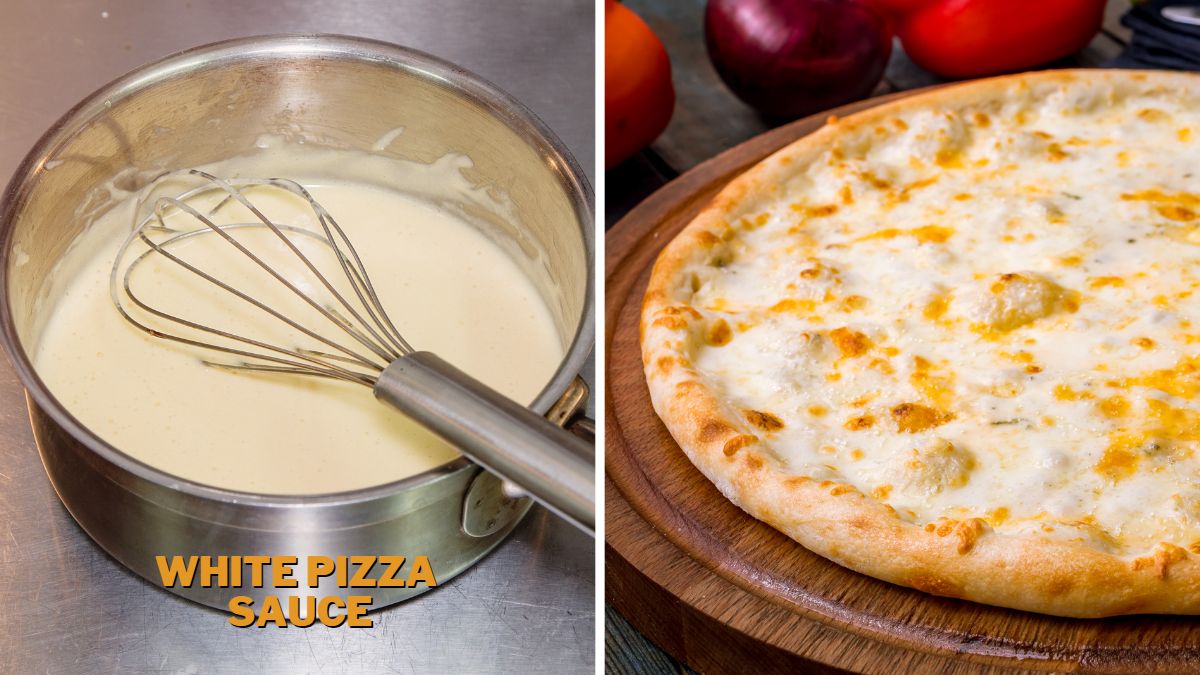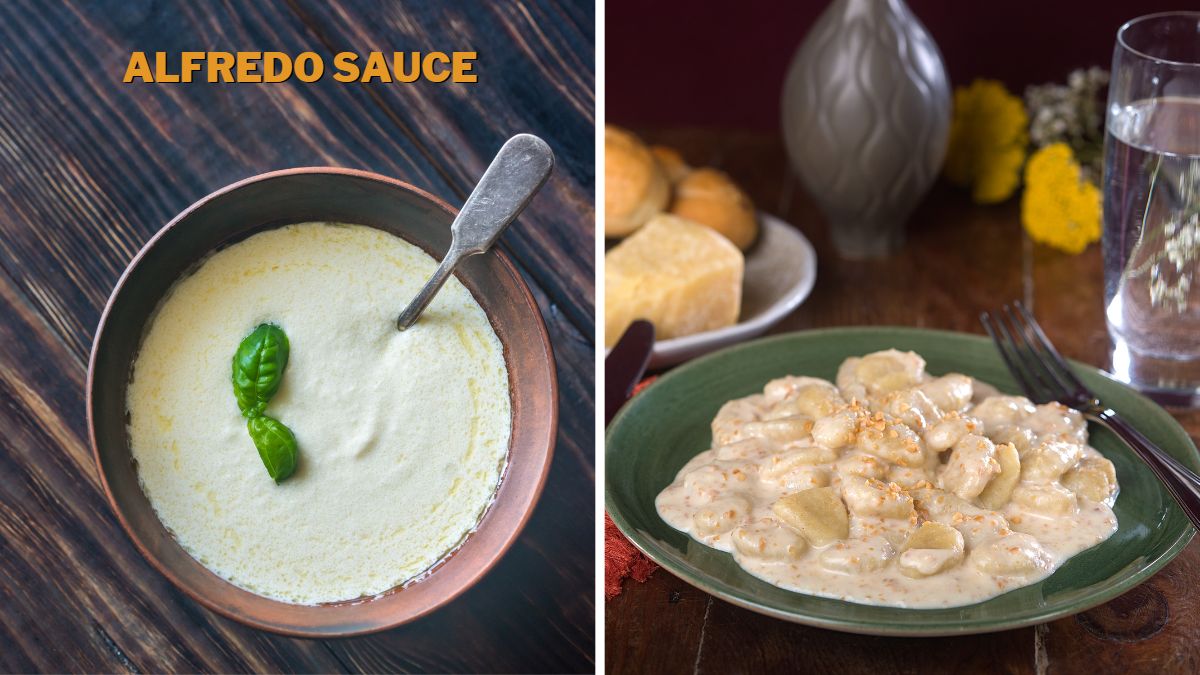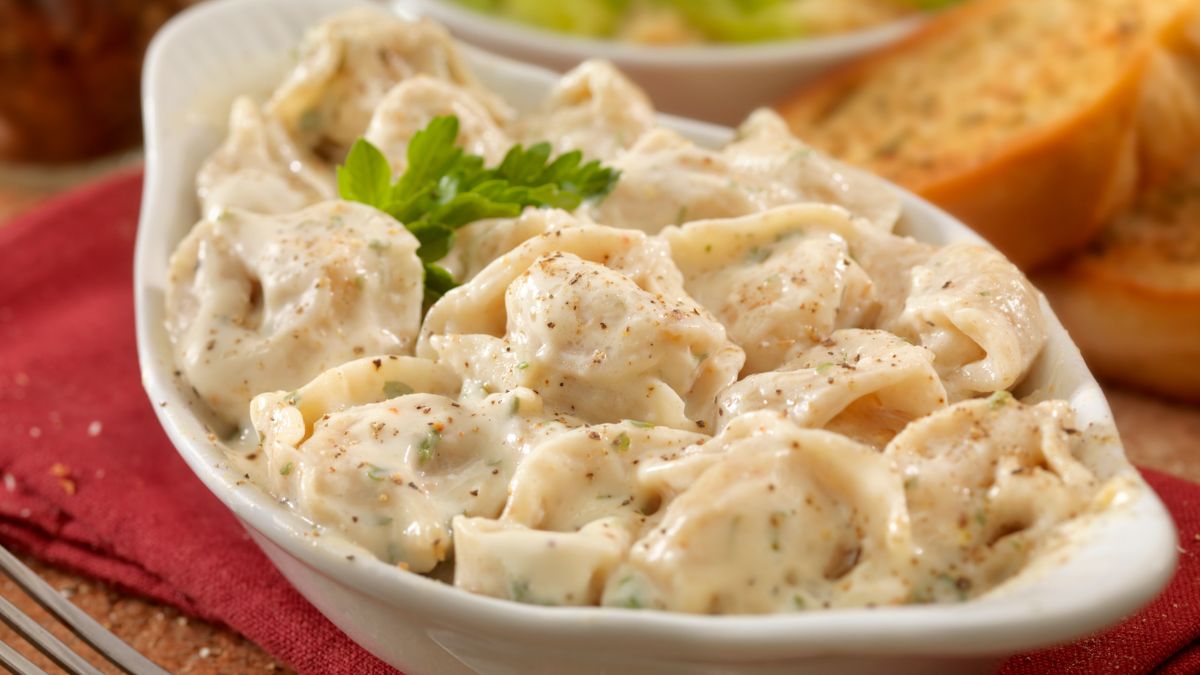White Pizza Sauce vs. Alfredo: Differences & Which Is Better?

Alfredo sauce and white pizza sauce share many of their features, which is to be expected since they share some of their base ingredients. Although many don’t consider the differences between these two rich sauces as very significant, they are indeed different. So, what are the differences between white pizza sauce and Alfredo, and which is better?
Although you can repurpose them, Alfredo sauce is pasta sauce, while white pizza sauce is pizza sauce. Alfredo is thinner, whereas white pizza sauce is thicker. Also, white pizza sauce is usually made with flour, among other ingredients, while Alfredo is mainly cheese and cream-based.
Despite appearing similar, Alfredo and white pizza sauce are entirely different sauces. Knowing their differences and similarities is crucial to using them properly and enjoying them fully. Therefore, I will describe and explain the differences between Alfredo and white pizza sauces in the following articles.
White Pizza Sauce vs. Alfredo: Differences
Both pizza sauce and Alfredo are very delicious and rich sauces, which is why they are widely used, even outside their intended purposes. Generally, Alfredo is used for pasta and sometimes as a salad dressing. White pizza sauce is known for its use for pizza and rarely goes on pasta since it is considerably thicker than Alfredo.
You can season them as you like since they are very versatile, but they often go best with garlic, salt, and pepper. Nevertheless, they go well with herbal spices and other seasonings you prefer. Don’t season them with heavy and overwhelming spices, though, as they tend to alter the base taste of the Alfredo and white pizza sauce.
Alfredo and white pizza sauce differ in terms of base ingredients, consistency, flavor, and purpose. As a result of the different ingredients, they also differ in their nutritional values, as well as preparation methods and taste.
Ingredients and Preparation
Alfredo sauce and white pizza sauce have similar appearances due to their use of similar ingredients. Still, although they are creamy and eggshell-colored, their ingredients do not overlap entirely.
Alfredo sauce is mainly cheese and cream-based sauce. The traditionally used cheese for Alfredo is parmesan, but often, you can substitute it for Gruyere or Mozzarella. The other ingredients are heavy cream and butter.
Alfredo is a very rich sauce but thinner than white pizza sauce. White pizza sauce contains butter, flour, and milk as compulsory ingredients, but it often is also made with cream cheese or soft cheeses that melt easily.
In terms of preparation, both Alfredo and white pizza sauce are very easy to make, requiring nothing more than basic cooking skills and love.
For Alfredo sauce, you melt all of the ingredients together; the order in which you put them in the pan is very important. Don’t put all ingredients in the pan simultaneously, as they don’t react to heat the same way.
First goes the butter to lubricate the pan. Second is the heavy cream, and in the end, goes the cheese. Don’t wait too long before adding the next ingredient, as they need to melt together to form a creamy but still liquid consistency.
The heat will thicken the sauce’s consistency if one ingredient melts or heats up before adding the next one. The seasoning comes in the end, so whatever you add for flavor, add it less than a minute before taking it off the stove.
The seasoning is usually garlic, but feel free to add herbal spices or some extra salt or pepper.
White pizza sauce requires proper timing, but still, no need to go above and beyond. White pizza sauce is a thicker Alfredo sauce, and while Alfredo sauce is pourable, white pizza sauce is smearable.

First, put the butter in the pan and let it melt. Once the butter has melted, next comes the flour. However, don’t just throw the flour inside the pan; rather, sift it, so it doesn’t form lumps. Mix the butter and flour until they homogenize.
Next comes the milk, and last comes the cheese. The cheese is optional, so you can omit it if you want to. Even though many recipes online call for early seasoning, I recommend you add the spices before adding the cheese.
If you decide not to use cheese, add the seasoning after adding the milk.
Taste and Consistency
Before I get into a more detailed description of the Alfredo and white pizza sauce taste, I must preface this section by emphasizing that they both taste decadently rich and heavenly delicious.
The Alfredo sauce has expressive buttery and cheesy notes. It is very creamy, and you can easily pour it onto your pasta or place it inside the sauce.
Because it is cheese-based, it sticks to pasta, salad, or meat, making it creamy and very rich. Alfredo sauce is moderately salty and expressively buttery if you don’t add extra salt. The extra salt amplifies the cheesy flavor, which is already on a high note, but this way, it becomes the leading dimension of the sauce.
Usually, the signature seasoning of Alfredo sauce is garlic, fresh or powdered, so the garlic flavor is also very noticeable. A piece of advice, though, is don’t go too far with the garlic, as it can easily encumber the flavor and diminish the Alfredo sauce as a whole.

White pizza sauce is more mellow, though it is also very flavourful. The main flavor-determining ingredient in the white pizza sauce is milk. Namely, milk is known to dim down intense flavors, so it does its thing here, balancing everything nicely and toning things down.
Since cheese is not a mandatory ingredient in white pizza sauce, it doesn’t have to taste cheesy. White pizza sauce is not used mainly for flavor but for texture. This means that it is supposed to be almost neutral but very creamy, almost thick.
Pizza toppings are what is intended to go on the white pizza sauce, so they release their juices on it. Imagine making the white pizza sauce intense and pairing it with other flavourful pizza toppings. It would result in a too-strong flavor, completely eliminating the point of the white pizza sauce in the first place.
Therefore, white pizza sauce tastes buttery and milky and is easily combinable if used for pizza. If you season the pizza topping more heavily or if you add cheese, it will serve another purpose better, such as for meaty meals.
The seasoning for white pizza sauce can be mild, such as a pinch of salt, or more comprehensive such as herbs, pepper, salt, and garlic. How you season, your white pizza sauce depends on how you plan to use it.
Uses
The clean-cut use for Alfredo sauce is for pasta, and white pizza sauce is for pizza. Nevertheless, these two sauces are often used outside their traditional intentions.
So, for example, you can use Alfredo sauce for pasta, meaty meals, salad dressing, or pastry dip. You can also use it as a dipping sauce for fries or vegetables.

White pizza sauce is a little more restrictive because of its thickness. Nevertheless, you can use it to smear whatever you want with it, such as pastries and plain bread slices, or even slap some of it in your sandwich.
Meaty meals always taste richer with white pizza sauce in them, as well as pasta if you like thicker sauces.
Still, I would say that Alfredo sauce has a wider range of applications than white pizza sauce because it is lighter and, generally, more flavourful.
You can combine them as you like, adjusting their flavors and consistencies, but remember that a thick Alfredo isn’t Alfredo and a thin white pizza sauce isn’t white pizza sauce.
Nutrition
Both Alfredo and white pizza sauce are caloric, satiating, and fatty. White pizza sauce has fewer carbs than Alfredo sauce, while Alfredo sauce contains fatter, as it contains cheese.
They both have protein as they contain dairy products. White pizza sauce also contains vitamins A, C, and D and sodium. [1]
Alfredo sauce has potassium, calcium, a tad of dietary fiber, and Vitamins A and C. [2]
Overall, they are both pretty fatty sauces, which is why you shouldn’t have them daily, but once or twice a week is perfectly ok to treat yourself to a juicy and rich meal containing them.
White Pizza Sauce vs. Alfredo: Which Is Better?
Both white pizza sauce and Alfredo do a fantastic job, depending on what you like. Although they are similar to some degree, they are not easily comparable, mainly because they are intended for two entirely different uses.
If you want a rich and creamy pizza, or a smearer to enhance your everyday meals, you should choose white pizza sauce.
Alfredo sauce should be your guy if you want juicy pasta or a flavourful dipping sauce.
Both go with excellent meaty meals.
Is Alfredo Sauce Good on Pizza?
Even though pizza is not the main thing Alfredo sauce is used on, it goes pretty well on it. Alfredo sauce is thinner than white pizza sauce, but it isn’t so thin as not to be able to spread.
Moreover, while baking the pizza, the Alfredo sauce will thicken, but it may make your pizza topping a little drippy. Therefore if you want to put Alfredo sauce on your pizza, make sure you bake it a tad longer than usual.
It also goes well on an already-baked pizza as a sauce.
